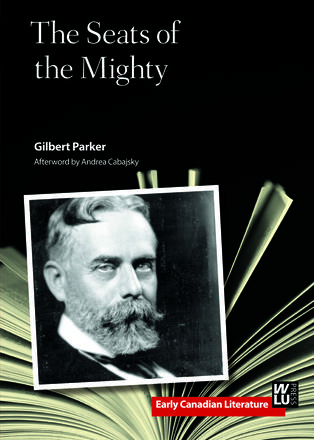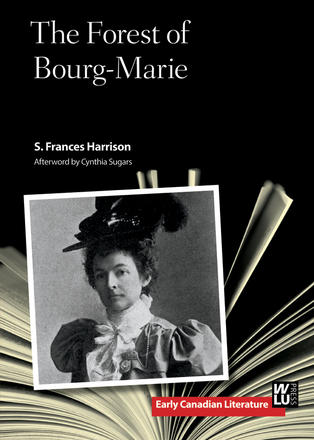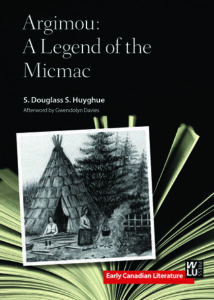
Coming up next in the Early Canadian Literature series published by Wilfrid Laurier University Press: a new edition of S. Douglass S. Huyghue’s 1847 book Argimou: A Legend of the Micmac, with an afterword by Gwendolyn Davies, to be published in April 2017!
Both an adventure-laced captivity tale and an impassioned denunciation of the marginalization of Indigenous culture in the face of European colonial expansion, Douglass Smith Huyghue’s Argimou (1847) is the first Canadian novel to describe the fall of eighteenth-century Fort Beauséjour and the expulsion of the Acadians. Its integration of the untamed New Brunswick landscape into the narrative, including a dramatic finale that takes place over the reversing falls in Saint John, intensifies a sense of the heroic proportions of the novel’s protagonist, Argimou.
Even if read as an escapist romance and captivity tale, Argimou captures for posterity a sense of the Tantramar mists, boundless forests, and majestic waters informing the topographical character of pre-Victorian New Brunswick. Its snapshot of the human suffering occasioned by the 1755 expulsion of the Acadians, and its appeal to Victorian readers to pay attention to the increasingly disenfranchised state of Indigenous peoples, make the novel a valuable contribution to early Canadian fiction.
Situating the novel in its eighteenth-century historical and geographical context, the afterword to this new edition foregrounds the author’s skilful adaptation of historical-fiction conventions popularized by Sir Walter Scott and additionally highlights his social concern for the fate of Indigenous cultures in nineteenth-century Maritime Canada.
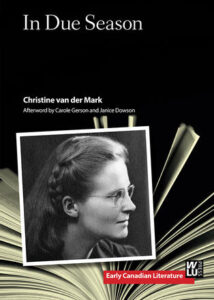

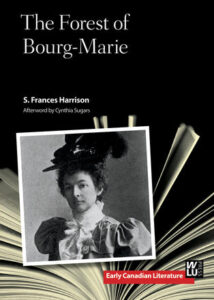
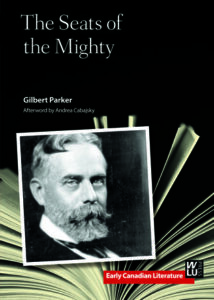
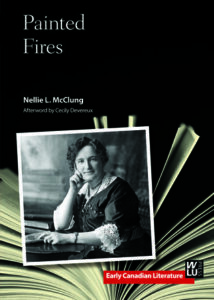
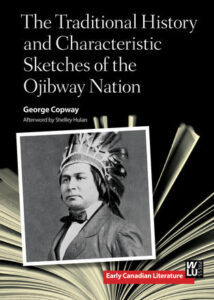
 First published in 1909, The Foreigner comes from the pen of bestselling author Ralph Connor, the pseudonym of Presbyterian minister and missionary Charles W. Gordon. The novel opens in Winnipeg, where Kalman Kalmar, a young Eastern European immigrant, is growing up under the shadow of his father, whose allegiance to the customs of the Old World has caused him to become a fugitive in Canada. After a violent encounter with his father’s sworn enemy, the adolescent Kalman is sent to a ranch in rural Saskatchewan, where, in learning the ways of the land, he must also reconcile the customs of his ancestors with the possibilities available to him in the New World. Part adventure story, part allegory for a vision of a culturally assimilated North West, the story features a form of male maturation and muscular Christianity recurring in Connor’s popular Western tales. Daniel Coleman’s afterword considers the text’s departure from Connor’s established fiction formulas and provides a framework for understanding its depiction of difference.
First published in 1909, The Foreigner comes from the pen of bestselling author Ralph Connor, the pseudonym of Presbyterian minister and missionary Charles W. Gordon. The novel opens in Winnipeg, where Kalman Kalmar, a young Eastern European immigrant, is growing up under the shadow of his father, whose allegiance to the customs of the Old World has caused him to become a fugitive in Canada. After a violent encounter with his father’s sworn enemy, the adolescent Kalman is sent to a ranch in rural Saskatchewan, where, in learning the ways of the land, he must also reconcile the customs of his ancestors with the possibilities available to him in the New World. Part adventure story, part allegory for a vision of a culturally assimilated North West, the story features a form of male maturation and muscular Christianity recurring in Connor’s popular Western tales. Daniel Coleman’s afterword considers the text’s departure from Connor’s established fiction formulas and provides a framework for understanding its depiction of difference.